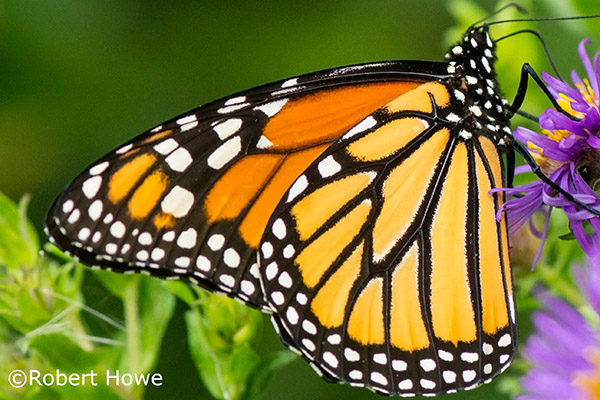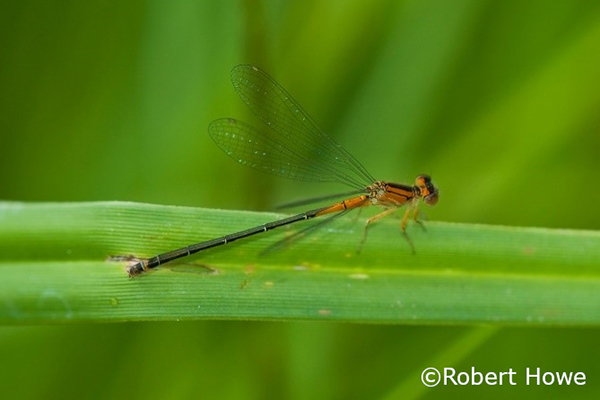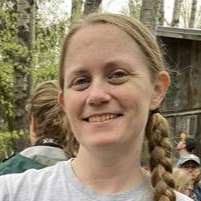Invertebrates

Coastal Terrestrial Macroinvertebrates
Coastal meadows and beaches of the LGBFR AOC provide potential habitat for a wide range of terrestrial or semi-terrestrial invertebrates, some of which are rare or threatened.
Two habitats of the aquatic-terrestrial interface, Great Lakes beaches and southern sedge meadows, are particularly imperiled in the LGBFR AOC. Restoration planning for these and other habitats should address the specific requirements of native invertebrates. Specifically, sandy substrates are used by many insects, spiders and other arthropods for nests and burrows; native flowering plants are used by butterflies, bees and other pollinators; and specialist insect herbivores like monarch, Baltimore checkerspot and other butterflies require specific host plants for larval development. These habitat features should be incorporated into future habitat restoration plans.

Coastal Wetland Aquatic Macroinvertebrates
Invertebrate communities of Great Lakes coastal wetlands are diverse and complex, including open water zooplankton, bottom-dwelling zoobenthos, epiphytic invertebrates (attached to vegetation and other objects) and surface-dwelling neuston (Krieger 1992). Even for conspicuous macroinvertebrates, large knowledge gaps exist, and an in-depth assessment of species assemblages would be prohibitively expensive and beyond the capacity of available expertise. Assessment and monitoring of wetland macroinvertebrates is further complicated by the fact that most species undergo developmental metamorphosis, where the ecology of juveniles and subadults is very different from that of adults.
From May through October 2016, UW-Green Bay graduate student Willson Gaul conducted surveys of Odonata at seven sites within the LGBFR AOC and one (Sensiba State Wildlife Area) site just north of Longtail Point. During 107 hours of field sampling, he identified 38 species (Table 2). Difficult species identifications were confirmed by WDNR Odonata expert Robert DuBois. Only two of the recorded species (green-striped darner, Aeshna verticalis and russet-tipped clubtail, Stylurus plagiatus) are listed as vulnerable (state rank = S3 and S3S4, respectively) in Wisconsin. Highest species richness (18 species) was recorded at the Sensiba State Wildlife Area reference site, followed closely by Point au Sable (17 species) and the Cat Island Wave Barrier (13 species).

Freshwater Unionid Mussels
North America supports the most diverse freshwater mussel fauna on Earth. The Mississippi River basin, in particular, contains more than three times the number of native mussel species as in the Amazon-Orinoco Basin in South America, more than three times the number of species in the entire Palearctic region (Europe and northern Asia) and more species than in any of the world’s drainage basins except the Gulf Coast region of the U.S. (Haag 2012).
Unfortunately, over 70% of the word’s freshwater mussel species are either extinct or imperiled (Strayer 1983, Ricciardi and Rasmussen 1999, Watters and Flaute 2010). Not only are these filter-feeders sensitive to sediment pollution, but individuals are long-lived (i.e., populations are slow to recover from disturbances) and have complex life cycles with a larval host, usually a fish or aquatic amphibian like the common mudpuppy (Necturus maculosus).
The LGBFR AOC appears to have lost most, if not all, of its native mussel fauna. Dead shells are easily found along the Green Bay shoreline today, bearing testimony to a recent unionid community that has given way to invasive dreissenid mussels (Dreissena polymorpha and D. bugensis) in this highly modified, hypereutrophic aquatic ecosystem.
UW-Green Bay graduate student Weinzinger (2017) found no live mussels at a site in Duck Creek, approximately 5 km inland from the Green Bay shore. Farther upstream, however, his sampling team found more than 500 individuals of 12 species. Weinzinger (2017) also found seven species (including Leptodea fragilis, not found in Duck Creek) in the Suamico River, which empties into Green Bay just north of the AOC boundary at Longtail Point.

Stream Macroinvertebrates
Stream macroinvertebrates are important because they are a food source for fishes, but they also influence other attributes of stream ecosystems including nutrient cycling, decomposition, patterns of primary productivity, and translocation of biomass (Wallace and Webster 1996). Despite the well-documented ecological significance of stream macroinvertebrate communities, we weighted stream macroinvertebrates in the lower quartile of species/species groups, largely because of their low economic importance and the limited extent of stream habitats in the LGBFR AOC.
Pollution abatement upstream clearly is important for improving the condition of stream macroinvertebrates, but restoration of in-stream habitat also is needed for many if not all small tributaries in the LGBFR AOC. Effective management actions include:
- improving stream connectivity by removing dams and other barriers
- restoring substrate features like gravel/sand riffles or woody debris
- restoring natural stream hydrology by reconstructing meanders, pools, backwaters, and other features lost through channelization
- rehabilitating streambank and riparian features by re-vegetation or bank stabilization.
Kitto et al. (2015), Swan and Brown (2017), and others have noted that physical changes in habitat do not always improve stream biodiversity because many native species are dispersal-limited, unable to rapidly recolonize stream segments where they have been locally extirpated. By the same token, quality upstream habitats might function as biological refugia, harboring native invertebrates that might recolonize restored sites downstream or even in the bay or Fox River.

Ask an Expert
Meet Erin Giese, Associate Director of the Cofrin Center for Biodiversity. She's President of the Northeastern Wisconsin Bird Alliance, principal investigator for the Great Lakes Coastal Wetland Monitoring Program and administrator of the annual CCB Student Grant Program. If you have questions, she can help!